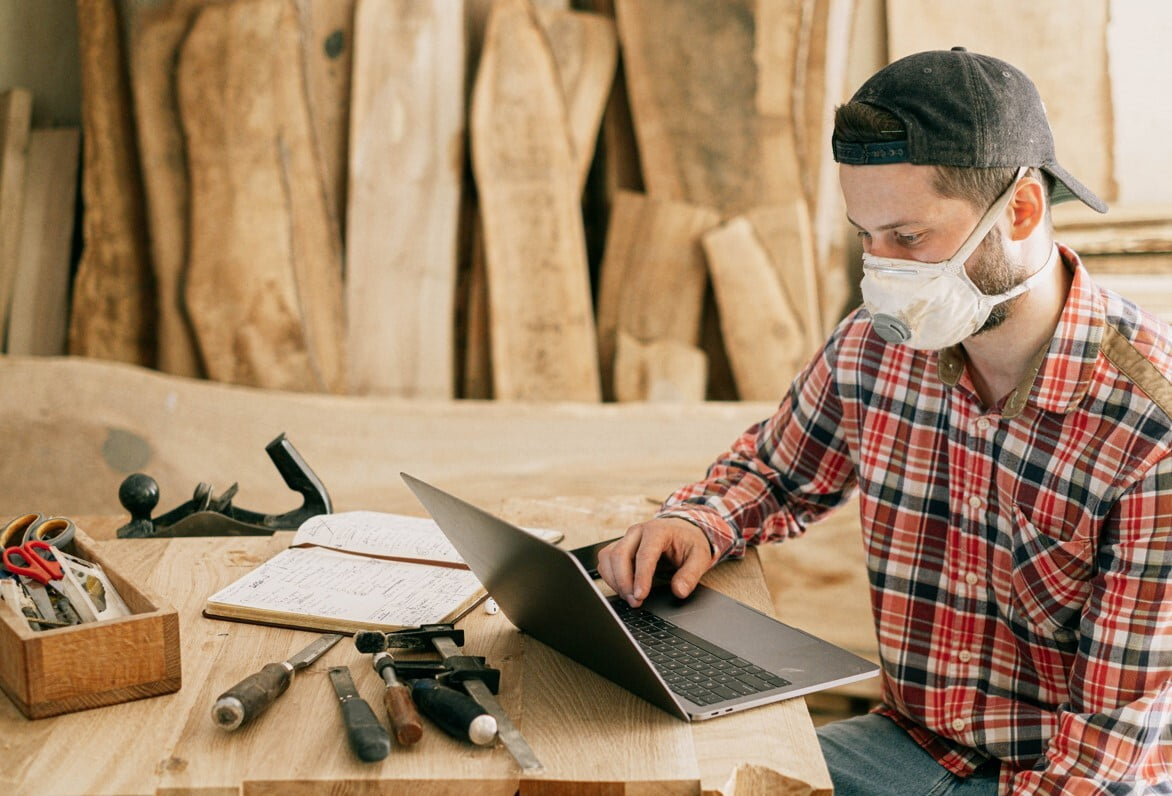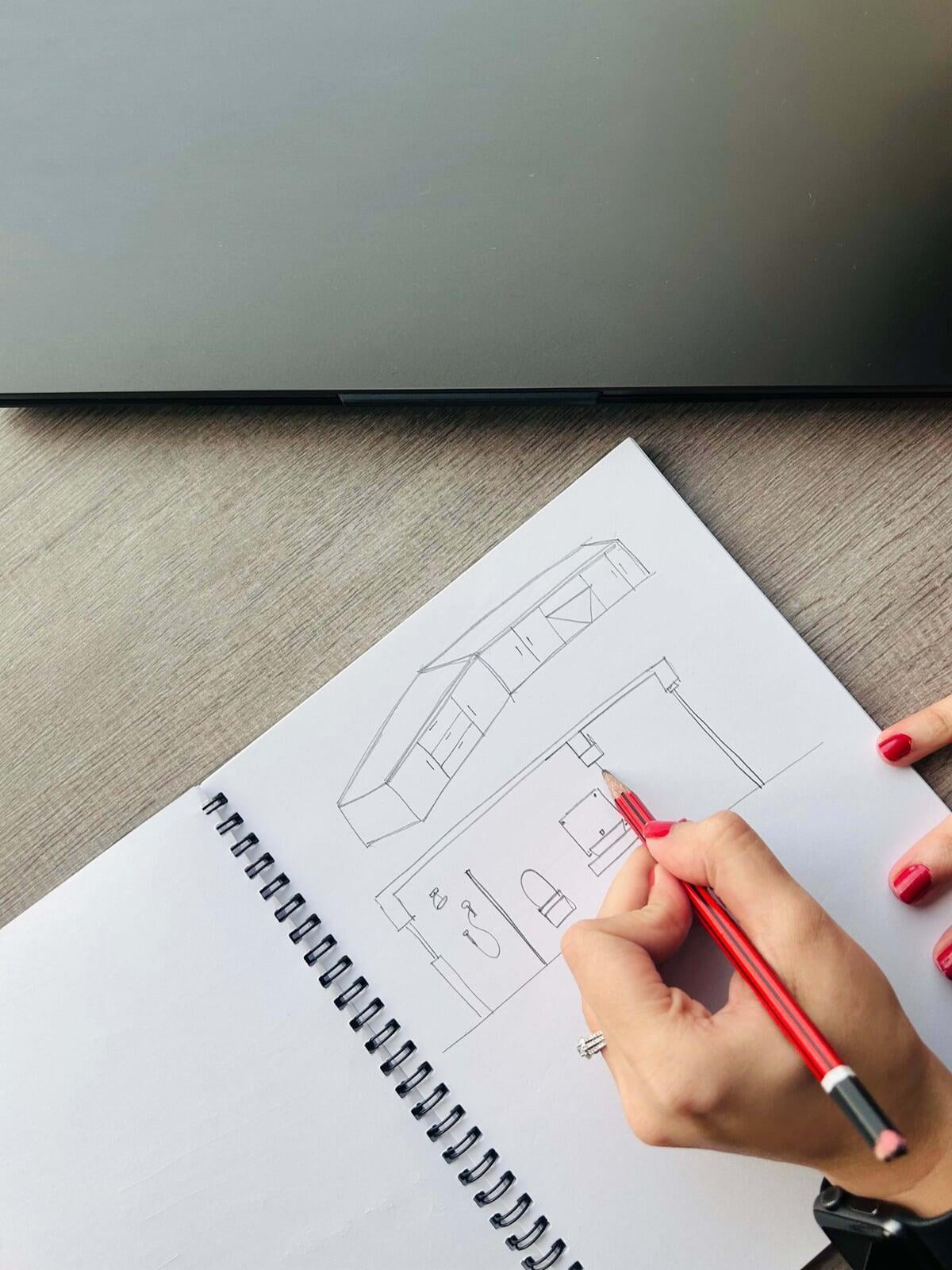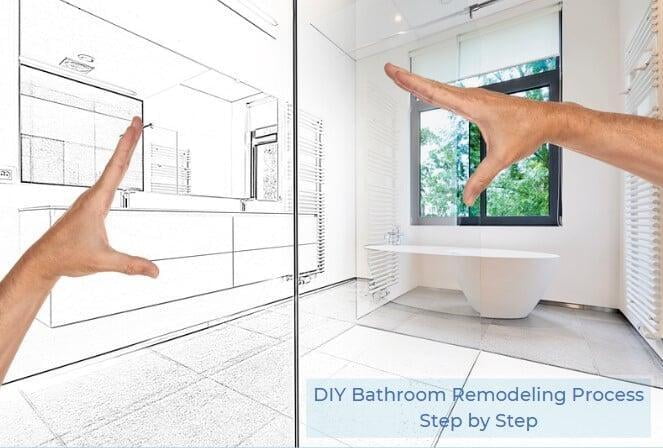
Do you feel like your bathroom needs a renovation and a makeover? Are you tired of the dull colors and plain fixtures that lack style? No need to stress because we've got a solution for you!
In this blog post, we'll provide a simple and easy-to-understand guide for remodeling your bathroom on your own. We'll walk you through everything, from planning the changes to actually making them happen. With this guide, we'll turn your outdated bathroom into your dream bathroom. Let's get started!
Understanding Your Bathroom Remodel Goals
Understanding Your Bathroom Remodel Goals
When you decide on doing a bathroom renovation, it's essential to start by clearly setting your goals. What do you want to achieve with this bathroom remodel project? Although you might have several things in mind, knowing your main objective will guide you throughout the bathroom remodeling process.
Do you want to make your bathroom look more attractive? You can do this by picking new colors, adding decorative items, or upgrading fixtures for a modern style. Alternatively, maybe you want to make better use of the space available. This could mean changing the layout or even making the room larger. If functionality is your main concern, you might consider adding more storage options or upgrading to more convenient and efficient bathroom fixtures.
Whatever your goal is, make sure to keep it in mind as you plan and work on your bathroom remodeling project.
Can You Remodel Your Bathroom Yourself?
Can You Remodel Your Bathroom Yourself?
Yes, you most certainly can! However, it's important to note that while it's completely possible to take on a DIY bathroom remodel, the complexity and success of the project will largely depend on your skills and experience.
For minor updates such as painting, changing light fixtures, or installing new hardware, these tasks can be straightforward and manageable for most homeowners. However, for more complex tasks like plumbing, electrical work, and tile setting, it's often best to hire professionals unless you're confident in your abilities.
By evaluating your competence and comfortability with the tasks involved, you can decide which aspects of the remodel to tackle yourself and where expert help might be worth the investment. Remember, a well-executed bathroom renovation doesn't require doing everything yourself, but rather, managing the project wisely and knowing when to call in the pros.
Bathroom Assessment
Bathroom Assessment
Before diving headfirst into the bathroom renovation, taking the time to thoroughly assess the current state of the bathroom is essential. This assessment involves evaluating both the physical condition and the aesthetic aspects of the space. Checking for signs of mold, mildew, water damage, and potential plumbing or electrical issues is vital to address any underlying problems before proceeding with cosmetic upgrades.
Initiating Your Bathroom Makeover
Initiating Your Bathroom Makeover

Setting a Remodeling Budget
Setting a Remodeling Budget
Setting a remodeling budget is crucial in the planning phase. It guides the bathroom renovation process and influences decision-making.
Your budget should accurately reflect material and labor costs, as well as unexpected expenses. Proper budgeting ensures avoiding overspending and staying on track with your DIY bathroom remodeling.
Once your overall budget is established, allocate it to different aspects of the remodeling process. Categorize costs into labor, fixtures, cabinetry, hardware, countertops, flooring, and additional expenses like lighting, painting, or windows. Reserve about 20% of the budget for unforeseen expenses.
To stay within budget, consider cost-effective options like vinyl flooring instead of hardwood or quartz countertops instead of granite. Refurbishing existing features also adds a unique touch and helps save money.
Formulating a Design Concept for the Bathroom Remodeling
Formulating a Design Concept for the Bathroom Remodeling
After laying out your budget, formulating the design concept for your bathroom renovation is the next essential step. It involves deciding on a color scheme, the overall aesthetic, and specific design elements that will shape your bathroom's new look.
When choosing a color scheme, consider colors that not only reflect your personal style but also harmonize with the rest of your home. Neutrals are often safe choices, but don't shy away from bolder colors if they suit your aesthetic.
For design ideas, browse home improvement magazines, websites, and social media platforms for inspiration. You might decide on a tranquil spa-like space with natural stone surfaces, a trendy black-and-white bathroom with modern fixtures, or perhaps a brightly colored space with vintage charm.
Remember, each element of the design, from the tiles to the towel racks, should work together to create a cohesive and visually pleasing space.
Measuring and Planning Layout
Measuring and Planning Layout
Once you have gathered your ideas, it is crucial to take precise measurements of your bathroom. Accurate measurements serve two important purposes: ensuring that all new fixtures fit perfectly into the available space and guiding the placement of each element for optimal functionality and aesthetics.
While measuring, the most critical factor to consider is allowing enough room for doors and drawers to open fully without any obstructions. Additionally, it is essential to maintain adequate space for movement and to avoid a cramped feel in high-traffic areas.
By carefully planning and considering these factors, you can ensure that your remodeled bathroom not only showcases its beauty but also provides practicality and comfort in its everyday use.
Selecting Materials
Selecting Materials
Selecting the right materials is crucial for your DIY bathroom remodel, not only for aesthetics but also for longevity and maintenance. When choosing materials, consider durability, ease of maintenance, and resistance to moisture due to the bathroom's high humidity environment.
When it comes to flooring, porcelain or ceramic tiles are highly favored for their water resistance and durability. For frequently utilized surfaces like countertops and vanities, materials such as quartz or granite are exceptional choices as they offer durability, low maintenance, and the ability to withstand heavy usage. These qualities make them ideal options for any bathroom remodeling project.
For showers and tubs, acrylic and fiberglass are both cost-effective and easy to install, while stone or tile can provide a more upscale look. Remember, while the initial cost is an important consideration, investing in high-quality materials can save money in the long term by reducing the need for repairs or replacement.
Lastly, always consider the sustainability aspect. Using eco-friendly materials not only supports the environment but can also add to the resale value of your home.
Creating a Timeline
Creating a Timeline
In creating your timeline, it's crucial to break down tasks into detailed steps and allocate specific durations for each. Factor in lead times for procuring materials or appliances, as these can sometimes lead to unforeseen delays.
Consider the sequencing of tasks as well — certain tasks must be completed before others can begin. For instance, plumbing and electrical work should precede wall finishing. Don't forget to allot time for final inspections to ensure everything is up to code.
Lastly, always build in some buffer time to accommodate any unexpected issues or delays. A detailed and well thought out timeline is your best tool for a smooth and efficient remodeling process.
Step-by-Step Guide to DIY Bathroom Remodeling
Step-by-Step Guide to DIY Bathroom Remodeling

Once you've laid out and understood the demands of your remodeling project, you can proceed with the actual work—here's a DIY bathroom remodel, a step-by-step guide.
- Demolition: Remove old fixtures, cabinets, bathroom tiles, drywall, and flooring carefully to avoid damaging surrounding areas. Turn off water and electricity to the bathroom before starting any demolition work.
- Plumbing and Electrical: Update or reposition plumbing and electrical connections as needed for new fixtures and lighting. Seek professional help if you're not experienced with plumbing and electrical work.
- Flooring Installation: Lay the new floor tile or any other flooring material, such as vinyl, laminate, or hardwood, following the manufacturer's instructions. Before proceeding with the installation, make sure the floor is level to achieve a smooth and precise result.
- Wall Tiles: When installing wall tiles in your bathroom remodeling project, including the shower walls, apply adhesive and install the tiles according to your design plan. Be sure to use spacers to ensure even spacing between the tiles, and use a level to keep them straight.
- Fixtures Installation: Install new fixtures such as sinks, faucets, toilets, bathtubs, and showers. Follow the manufacturer's instructions carefully to ensure proper installation.
- Cabinets and Storage: If you're adding new cabinets or shelves, assemble and install them according to the manufacturer's guidelines.
- Painting: Apply a fresh coat of paint to the walls and ceiling after ensuring that any required repairs are completed. Use a moisture-resistant paint suitable for bathrooms.
- Lighting and Ventilation: Install new lighting fixtures and ensure proper wiring connections. Additionally, consider adding a bathroom fan to reduce moisture and prevent mold growth.
- Finishing Touches: Apply sealant around fixtures, tiles, and joints to prevent water leakage. Install bathroom accessories like towel racks, towel bars, toilet paper holder, mirrors, and other decorative elements.
- Final Inspection: Thoroughly inspect the completed project to ensure everything is in place and functioning correctly. Check for any issues like leaks, loose fixtures, or electrical problems.
- Clean Up: Clean the bathroom thoroughly, removing any debris and construction dust. Wipe down surfaces and ensure the bathroom is ready for use
Executing a bathroom remodeling project requires skill and knowledge, especially when dealing with plumbing and electrical systems. If you encounter tasks beyond your expertise, it's always wise to seek professional assistance to ensure safety and a successful outcome.
DIY Bathroom Remodel Cost
DIY Bathroom Remodel Cost
The cost of a DIY bathroom remodel can vary significantly depending on the extent of the project and the materials chosen.
On the lower end, a basic remodel with budget-friendly fixtures can cost as little as $1000 to $3000. If you're aiming for a more comprehensive upgrade with premium materials and fixtures, you could spend anywhere from $5000 to $15,000.
Keep in mind that these costs can increase if unexpected issues arise like plumbing or electrical problems that require professional assistance. It's always a good idea to budget an extra 10-20% for unforeseen expenses when planning your bathroom remodel.
Is DIY Bathroom Remodel Worth It?
Is DIY Bathroom Remodel Worth It?
When evaluating whether a DIY bathroom remodel is worth it, it depends on your skills, available time, and comfort level with handling the tasks.
DIY Pros:
DIY Pros:
- Cost Savings: When you do the work yourself, you cut out labor costs from a contractor, potentially saving a substantial amount of money.
- Personal Satisfaction: There's a sense of achievement and personal satisfaction that comes with completing a project with your own hands.
DIY Cons:
DIY Cons:
- Time Investment: A DIY project takes time, and often, more than initially anticipated.
- Risk of Mistakes: Without professional training, there's always a risk of errors, which could lead to additional costs in the long run.
The Value of Hiring a Professional
The Value of Hiring a Professional
Hiring a professional for your bathroom remodel provides essential advantages that can significantly impact the project's success. Their expertise and experience ensure that the job is done correctly the first time, avoiding costly mistakes. With specialized skills and equipment, professionals work efficiently, saving time compared to DIY projects that often involve a learning curve.
The quality of the finished work is also elevated, as professionals have access to top-tier tools and materials. Beyond the tangible benefits, hiring a professional reduces stress during the remodeling process. Homeowners can focus on design decisions while leaving the heavy lifting to the experts, allowing for a smoother and more enjoyable experience.
Moreover, a professionally executed bathroom remodel can substantially enhance the value of the home. This increased value not only contributes to a more comfortable living space but also translates to a higher return on investment when selling the property in the future. Ultimately, choosing a professional for your bathroom remodel proves to be a prudent and rewarding investment.
Final Thoughts on Achieving Your Bathroom Remodel Goals
Final Thoughts on Achieving Your Bathroom Remodel Goals
In the end, achieving your bathroom remodel goals hinges on thoughtful planning, informed decision-making, and the right professional assistance.
Remember that the ultimate goal of a remodel is not just to create a visually pleasing space, but also one that caters to your specific needs and enhances your daily routines. Well-executed bathroom remodels can not only improve the quality of your life but also significantly increase the value of your home.
So, whether you're updating a small powder room, a guest bathroom, or renovating a large master bathroom, make sure to approach the projects with a clear vision, an open mind, and a commitment to quality. With these elements in place, your remodels are sure to be resounding successes.
If you're ready to embark on your bathroom remodeling project and need professional assistance to turn your vision into reality, we're here to help! Our team of experienced and skilled experts is dedicated to delivering top-notch bathroom renovations that align with your unique needs and preferences.
Don't hesitate to reach out to us to discuss your ideas and goals for the project. Contact us today, and let's begin this transformative journey together!

